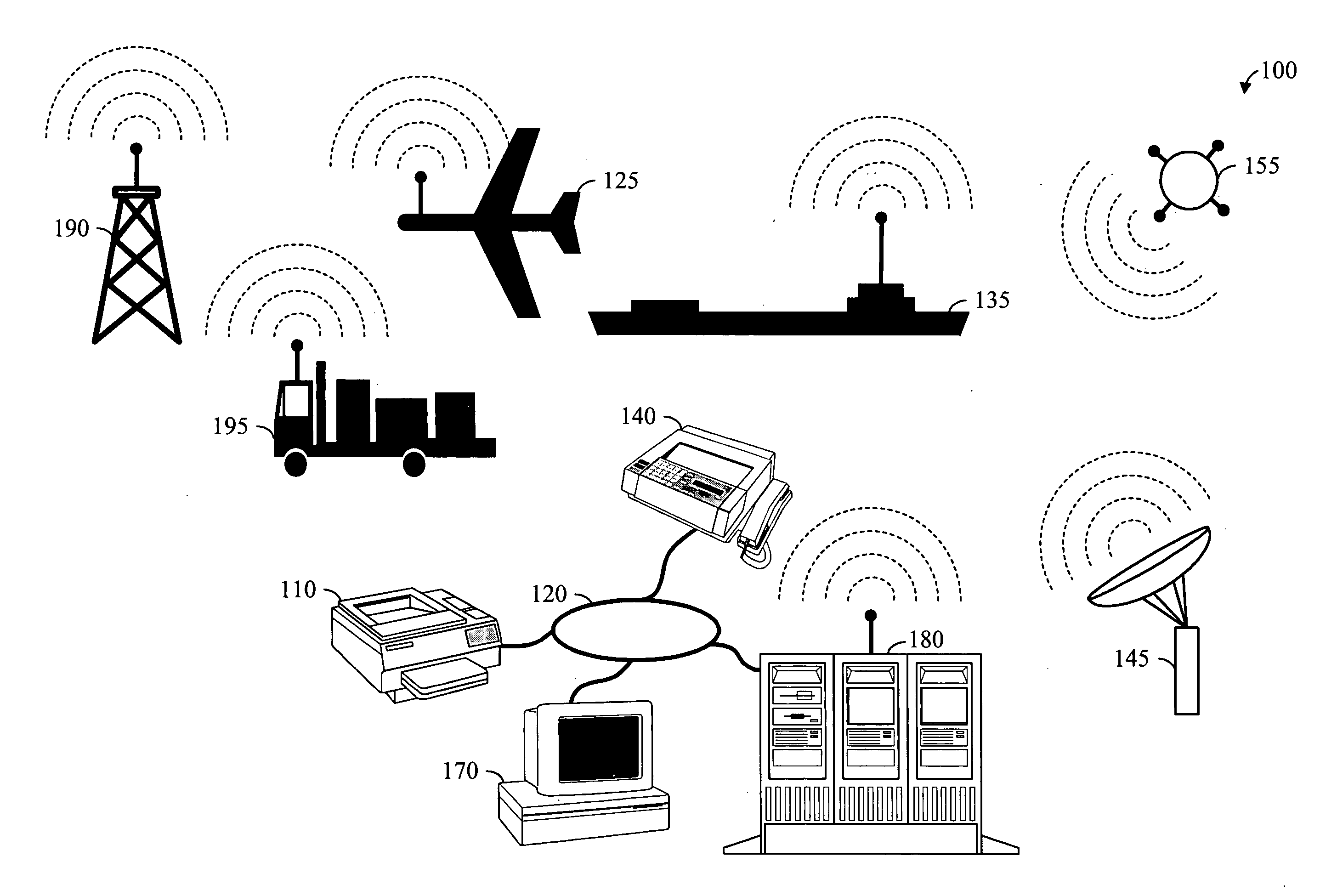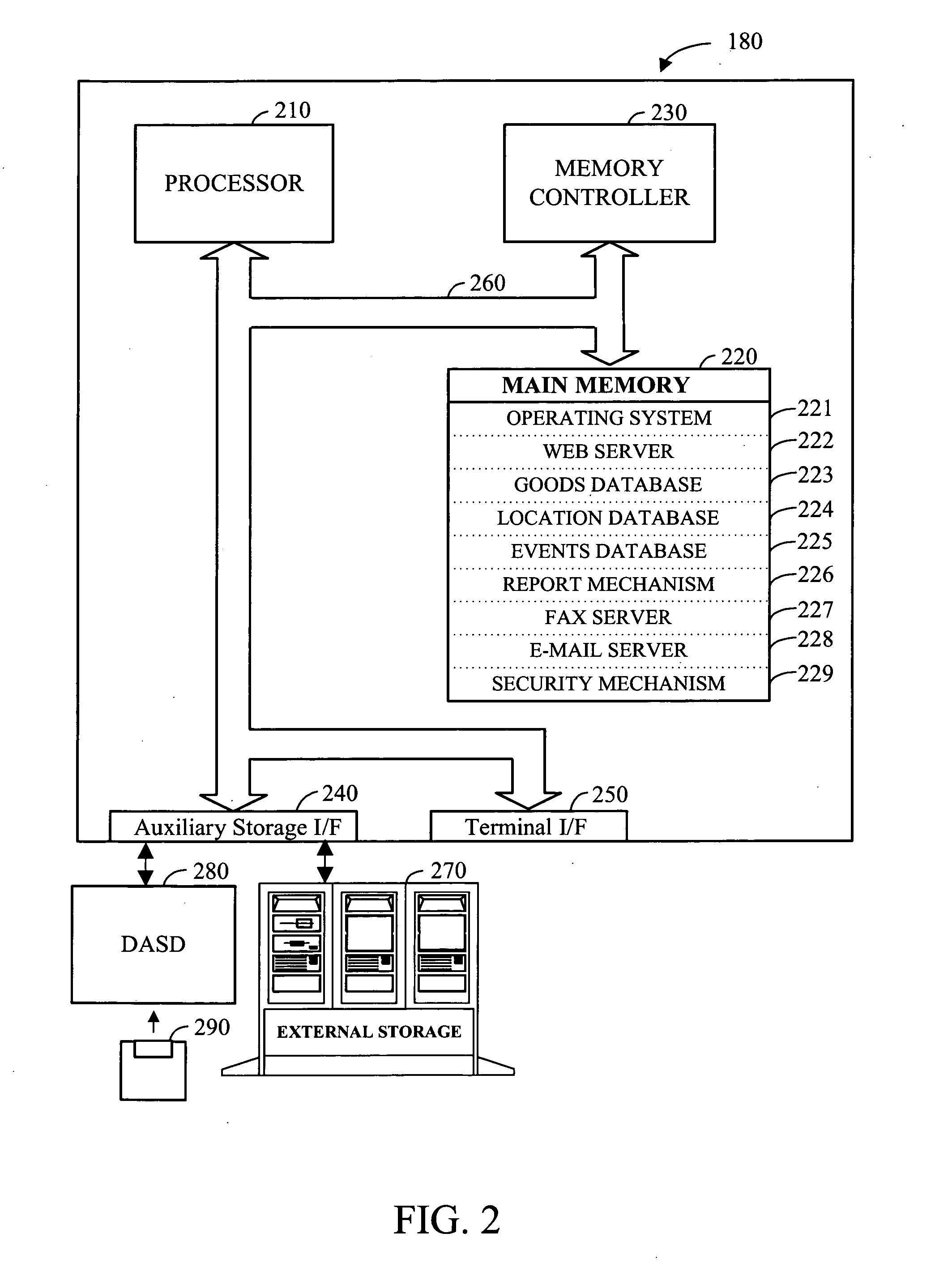Apparatus and method for monitoring in-transit shipments
a technology for in-transit shipments and apparatus, applied in the field of shipping, can solve the problems of inability to detect damage, lack of accountability for the condition, and the complexity of ensuring the safe delivery of products and goods to their ultimate destination, and achieve the effect of less in-transit damage and shortening holding times
- Summary
- Abstract
- Description
- Claims
- Application Information
AI Technical Summary
Benefits of technology
Problems solved by technology
Method used
Image
Examples
Embodiment Construction
[0019] Radio frequency, or RF, refers to that portion of the electromagnetic spectrum in which electromagnetic waves can be generated by alternating current fed to an antenna. One very popular RF standard is known as “bluetooth.” Bluetooth is an industrial specification commonly used to implement wireless personal area networks (PANs). Bluetooth communication provides a way to connect and exchange information between devices like personal digital assistants (PDAs), mobile phones, laptops, PCs, printers and digital cameras via a secure, low-cost, globally available short-range radio frequency. Bluetooth lets these devices talk to each other when they come in range, even if they are not in the same room, as long as they are within up to 100 meters (328 feet) of each other, dependent on the power class of the product. Bluetooth is defined in IEEE standard 802.15.1.
[0020] The effective transmission range for standard Bluetooth wireless communication is about 10 meters. With optional po...
PUM
 Login to View More
Login to View More Abstract
Description
Claims
Application Information
 Login to View More
Login to View More - R&D
- Intellectual Property
- Life Sciences
- Materials
- Tech Scout
- Unparalleled Data Quality
- Higher Quality Content
- 60% Fewer Hallucinations
Browse by: Latest US Patents, China's latest patents, Technical Efficacy Thesaurus, Application Domain, Technology Topic, Popular Technical Reports.
© 2025 PatSnap. All rights reserved.Legal|Privacy policy|Modern Slavery Act Transparency Statement|Sitemap|About US| Contact US: help@patsnap.com



